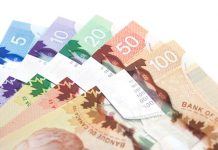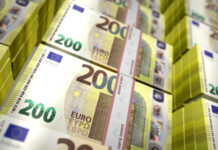Markets
The post-Fed flattening of the US yield curve slowed during last week. The ‘surprise’ of potential earlier rate hikes as mirrored in the Fed dots apparently is discounted. Comments from individual Fed governors still showed a high degree of discord making any assessment on the timing a Fed lift-off highly speculative. On Friday, the US core PCE-deflators as expected rose further to 3.9% (headline) and 3.4% (core) but didn’t bring much news for markets. The initial market reaction was muted, but some reflationary dynamics resurfaced going into the weekend. We didn’t see a specific trigger. Maybe the market is starting to focus on the tapering of asset purchases. The 1-year inflation expectations in the Michigan consumer confidence release rising to 4.2% maybe also brought the inflation narrative again in the picture. At the end of the day, the US yield curve bear steepened with the 2-y yield little changed but the 30-y rising 5.1 bp. The move was almost solely due to higher inflation expectations. The German yield curve showed a similar pattern rising between 0.3% bp (2-y) and 4.2% (30-y). US equites kept a positive momentum with the Nasdaq underperforming (-0.06%) but the Dow (+0.69%) and the S&P (0.33%) extending gains, with the latter setting a new record. The dollar initially continued the post-Fed correction that started earlier last week, but earlier intra-day losses were reversed in the final hours of trading. EUR/USD finished at little changed at 1.1935. DXY closed at 91.85. Sterling still traded slightly in the defensive post-BoE with EUR/GBP revisiting the 0.86 area.
Today’s data calendar is thin, but plenty of ECB board members are scheduled to speak and the EC will publish its summer economic forecasts. Later this week there will be plenty of data with market moving potential. In Europe the German and EMU preliminary inflation data will be released (Tuesday/Wednesday). In the US, ADP labour data (Wednesday), manufacturing ISM (Thursday) and the payrolls (Friday) will be put against recent Fed-guidance. Especially, the US labour market data will be key. The payrolls disappointed in April and May. Will the reopening finally cause US workers to return to the labour market? If so, this process might help to put a floor for US yields. Even in case of constructive data, it’s not that evident for the flattening trend in the US to continue. Anticipation on bond buying tapering (and maybe also a bottoming in inflation expectations) might support a further bottoming process in US LT yields. The US 10-y (1.52) is again in ‘neutral’ territory. 1.58%/1.63% is next reference on the technical charts. Constructive data and higher US yields might be a mildly positive for the dollar. Even so, we assume that the EUR/USD 1.1850 support won’t be that easy to break. EUR/GBP trading is still locked in a tight range near the 0.86 pivot. 0.8643/72 area is first (probably tough) resistance.
News headlines
The second and final round of French regional elections didn’t yield any upsets. Most centre-left and right incumbents will keep their seats. The national vote tally showed 38% support for the right, 34.5% for (centre-)left parties, 20% for Le Pen’s Rassemblement National and only 7% for President Macron’s LREM movement. The extreme right RN failed to conquer a hoped-for regional presidency in Provence-Alpes-Côte-d’Azur and also fell short in Hauts-de-France. Vote turn-out was very low at only 35%. The first round of French presidential elections are scheduled for April next year.
Several Australian states and cities are imposing fresh lockdowns or restrictive measures in order to contain an outbreak of the delta variant of the Covid-virus. The travel bubble with New Zealand is suspended. The new Covid-clusters show Australia’s continued vulnerability to virus in its “Covid-zero” strategy which focuses on keeping international borders closed in combination with rigorous testing. The Australian vaccination campaign lags significantly behind with only 14% of the population having received their jab. The Aussie dollar doesn’t react with AUD/USD just below 0.76.












